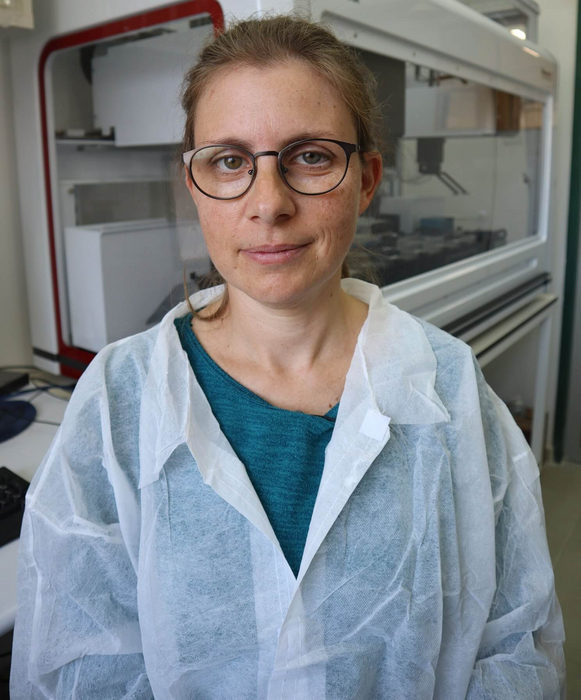
New SARS-CoV-2 variants are expected since the virus is continually evolving. The Alpha variant first appeared in early 2021, and the Delta variant emerged later that summer. The Omicron variant, which spread quickly throughout the nation in late 2021 and early 2022, is now the most common variation circulating in the US today.
A new study explains where COVID-19 variants come from
New research shows that people with weakened immune systems are more likely to get chronic infections and produce virus variants that bear multiple antibody-resistant mutations. However, there is good news. While many distinct variations develop in immunocompromised individuals, their likelihood of spreading is small.
According to recent research from Tel Aviv University, immunosuppressed chronic COVID-19 patients are thought to be the source of several SARS-CoV-2 variants. The researchers hypothesize that a compromised immune reaction, particularly in the lower airways of these chronic patients, may delay complete recovery from the virus and cause the virus to evolve often during the course of prolonged infection. In other words, the researchers explain that the virus’s unrestricted survival and reproduction in the body of the immunosuppressed patient result in the emergence of numerous variants.
Furthermore, the variations reported in chronically sick COVID-19 patients had many of the same mutations in their development as those found in variants of concern for severe illness, notably those linked with evading disease-killing antibodies. The new findings show that, although rapidly-spreading variations are rare among the numerous strains harbored by immunocompromised people, the likelihood increases and they do arise when global infection rates boom.
The study was led by Prof. Adi Stern and Ph.D. student Sheri Harari of the Shmunis School of Biomedicine and Cancer Research at the Wise Faculty of Life Sciences at Tel Aviv University, in collaboration with Dr. Yael Paran and Dr. Suzy Meijer of Tel Aviv Sourasky Medical Center (Ichilov). It was published in the prestigious journal Nature Medicine on June 20th, 2022.
Prof. Stern explains that since the outbreak of COVID-19, the rate at which the virus evolves has been somewhat puzzling. During the first year of the pandemic, a relatively slow but constant rate of mutations was observed. However, since the end of 2020, the world has witnessed the emergence of variants that are characterized by a large number of mutations, far exceeding the rate observed during the first year.
Various scientific hypotheses about the link between chronic COVID-19 patients and the rate of the accumulation of mutations have surfaced, but nothing definitive has been proven yet. In this new study, Prof. Stern and the team shed light on some pieces of this complex puzzle and try to answer the question of how variants are formed.
Prof. Stern explains: “The coronavirus is characterized by the fact that in every population, there are people who become chronically infected. In the case of these patients, the virus remains in their body for a lengthy period of time, and they are at high risk for recurrent infection. In all of the cases observed so far, these were immunocompromised patients – part of their immune system is damaged and unable to function. In biological evolutionary terms, these patients constitute an ‘incubator’ for viruses and mutations – the virus persists in their body for a long time and succeeds in adapting to the immune system, by accumulating various mutations.”
The study involved an examination of chronic COVID-19 patients at the Tel Aviv Sourasky Medical Center (“Ichilov Hospital”). According to Prof. Stern, the results reveal a complex picture; on the one hand, no direct connection was found between anti-COVID-19 drug treatment and the development of variants. On the other hand, the researchers discovered that it is likely the weakened immune system of immunocompromised patients that creates pressure for the virus to mutate.
In fact, the researchers found that there were chronic patients who showed a pattern of apparent recovery, followed by recurring viral infection. In all of these patients, a mutated form of the virus emerged, suggesting that recovery had not been achieved; this is partially reminiscent of the modus operandi of HIV following inadequate drug treatment.
Upon closer examination of some patients, the researchers found that when such a pattern of apparent recovery is observed (based on negative nasopharyngeal swabs), the virus continues to thrive in the lungs of the patients. The researchers, therefore, suggest that the virus accumulates mutations in the lungs, and then traverses back to the upper respiratory tract.
Prof. Stern concludes: “The complexity of coronavirus evolution is still being revealed, and this poses many challenges to the scientific community. I believe that our research has succeeded in peeling back a missing layer of the big picture, and has opened the door for further research efforts to discover the origins of the various variants. This study highlights the importance of protecting immunocompromised individuals, who are at high risk for the virus, yet may also be an incubator for the formation of the next variant, posing a risk to all of us.”
Reference: “Drivers of adaptive evolution during chronic SARS-CoV-2 infections” by Sheri Harari, Maayan Tahor, Natalie Rutsinsky, Suzy Meijer, Danielle Miller, Oryan Henig, Ora Halutz, Katia Levytskyi, Ronen Ben-Ami, Amos Adler, Yael Paran, and Adi Stern, 20 June 2022, Nature Medicine.
DOI: 10.1038/s41591-022-01882-4









Be the first to comment on "What Is the Origin of COVID-19 Variants Like Omicron?"